Learning blog publishing best practices from the top 10 UK marketing blogs
Creating remarkable content is one of the core components of inbound marketing, and one of the best ways to generate a steady flow of fresh content is by publishing a business blog.
HubSpot research indicates companies that blog generate 55% more website visitors, 97% more inbound links, and have 434% more indexed pages than companies that don’t blog.
Whether you’ve only just decided to launch a blog for your business or you’ve been blogging for a while, this post will help prevent you from falling victim to some of the most common business blogging mistakes and teach you how to fix the blogging mistakes you might already be making.
1. Not having editorial/style guidelines
Mistake: Not having a documented style guide for all contributors to your blog. Your blog has a different look and feel for every writer, both internal and external to your company. There’s no identifiable brand personality emanating from your posts and a lack of focus on relevant content to support your audience and your goals.
“Solid style guidelines covering types of content, formatting, tone of voice and banning SEO ploys vastly improves the quality of articles submitted and allows you to reject some that don't make the grade.” -
Dr. Dave Chaffey, Smart Insights
Fix: Your written style guide can include everything from the fonts your brand uses to how a word should be spelled, capitalised, or hyphenated. You should convey your brand’s tone of voice, the types of content that you write and the quality standards expected. This can be an internal document or something you can provide to guest bloggers.
See an excerpt of the HubSpot written style guide below as an example:
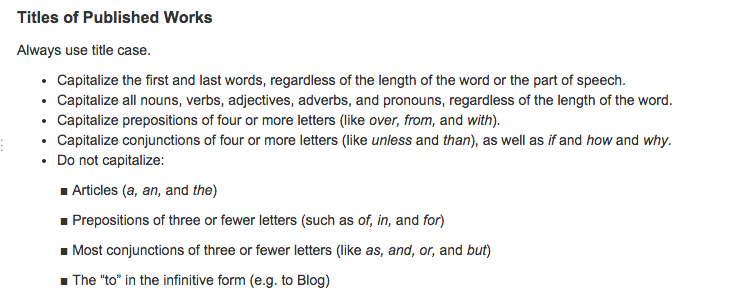
2. Talking about yourself
Mistake: The content you publish on your blog is too heavily focused on you – your products, services, achievements, and why you’re great.
Fix: Change the way you think about content for your blog. Instead of creating product-focused content that is unlikely to get shared, consider spending more time on educational, data-driven, or especially thought-provoking content relative to your industry. This type of content has a much better chance of attracting readers, as well as being shared.
In order to know which topics to write about that will resonate with your audience you need to do some buyer persona research and development. This tool can help you get started.
Take Distilled for example; like HubSpot they have discovered the topics that their audience needs help with and created a content marketing strategy around those topics.
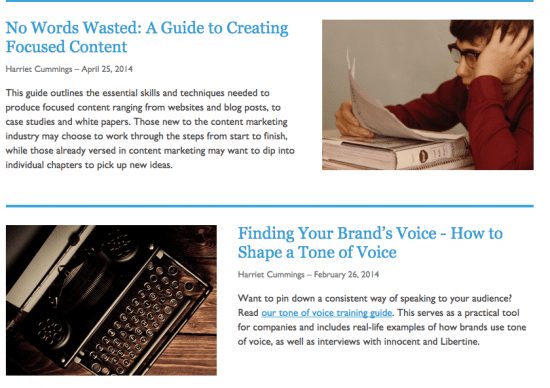
3. Using text only
Mistake: Your blog is a monotonous stream of the same type of content, offering no variety or imagery, and boring your readers to death.
Fix: People like to consume information differently, and by not offering variety, you’re limiting the reach of your content only to people who like consuming information in one specific way.
Start mixing up your blog content by including images, graphs, infographics, videos, SlideShares and even audio files.
The example below comes from the guys here at Smart Insights who did a great job of including shareable images in their blog.
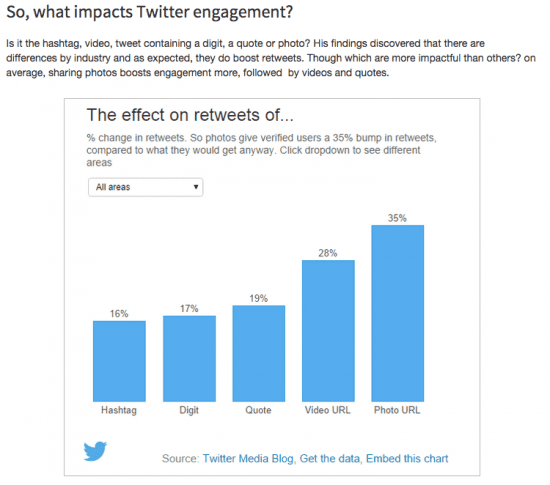
“There are many blogs that don't use visuals on all posts and miss opportunities to engage through embedding YouTube, Slideshare and Google Docs/PDFs.”
Dr. Dave Chaffey, Smart Insights
4. Not sticking to a publishing schedule
Mistake: You have a blog, but you don’t publish posts on a regular basis, and when you do post, you’re not publishing enough articles to make your blog effective. Businesses that blog at least 20X per month generate over 5X more traffic than those that blog fewer than 4 times per month. Even better, businesses that blog at least 20X per month generate nearly 4X more leads than those that don’t blog.
Fix: Adopting a laid-back approach to business blogging won’t move the needle; creating a blog that actually generates business success takes time, effort, and dedication. Make a commitment to the upkeep of your blog. The most common frequency we observed for business blogging is weekly, so start by striving for at least one blog post per week and work your way up. If time or bandwidth is a major concern or deterrent for you, consider other ways to source content for your blog.
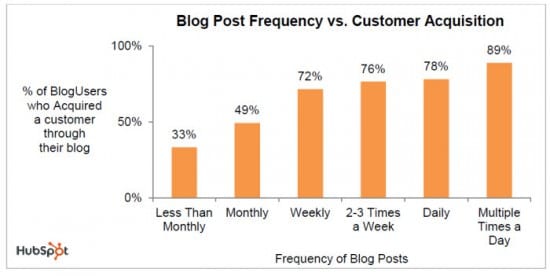
5. Not paying enough attention to your headlines
Mistake: You’re so focused on the content of the blog post itself that you don’t consider the powerful impact the blog article’s title has on the post’s performance.
Fix: A great title is often the difference between a business blogging article that generates a few views and an article that generates tons of views. At HubSpot, we changed a title & got 776% more leads from that one tiny change alone! You should always A/B test your titles with a small sample size before promoting it to the rest of the world with the winning title.
Great headlines should be actionable, keyword-conscious, brief, clear and intriguing.

6. Not optimising it for lead conversion
Mistake: There are few (or maybe even zero) calls-to-action (CTAs) on your blog, severely limiting its potential to convert visitors into leads and customers for your business.
Fix: If you’re not optimising your blog with offers and calls-to-action, you’re missing out on a tremendously powerful business opportunity to generate leads, thus diminishing the value of your blog’s ROI. make it a habit to ensure that every blog post you publish has a CTA in addition to placing CTAs to the top and/or sidebar of your blog. Also think about revisiting old blog posts (particularly those that receive the most traffic) and adding CTAs to them too, since people are still probably finding, reading, and deriving value from your blog’s evergreen content long after it’s published. Here are eight different CTAs you can add to your blog to start converting all that traffic.
By adding a one field subscription form at the end of HubSpot’s blog posts we were able to increase our blog subscribers by 20%, so this is a good one to try out.

7. Failing to promote on social media
Mistake: You’ve launched a business blog and are publishing articles on a regular basis, yet you’re not taking advantage of the power of social media to promote your blog content and increase your readership and subscriber base.
Fix: By not promoting your blog content via social networks and social media sites, you are missing an opportunity to reach a large audience of readers who may be interested in your content but don’t even know it exists. Spend more time building your reach on social media and promoting your content there. If you don’t have the time to promote your content, scale back on the amount of content you’re creating to allow yourself some more time to promote existing content.
Plus, social media posts show up in the search engine results!
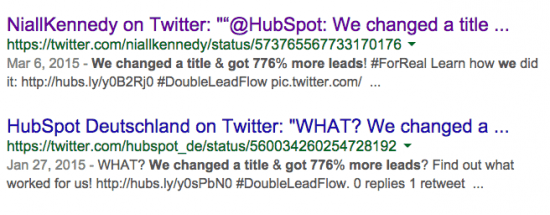
All of the examples used in this blog post have been ranked in the top 5 blogs on HubSpot’s brand new InboundRank tool which -- using different parameters like traffic, domain authority, and social shares - ranks the top marketing blogs in the U.K. Have you ranked yours yet?

Thanks to
Olivia Kirwan for sharing their advice and opinions in this post. Olivia Kirwan is the Senior Enterprise Territory Manager at
HubSpot EMEA. She works with enterprise companies in Europe to help them excel their growth with inbound marketing. You can follow her on
Twitter or connect on https://www.linkedin.com/in/oliviakirwan









 Thanks to
Thanks to 

